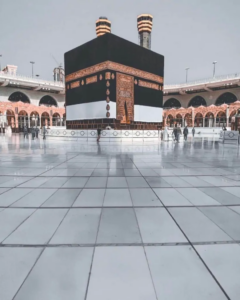Annisa Essack | kzn@radioislam.org.za
14 April 2023 | 12:00CAT
1 min read

Photo Credit: Arab News
Visitors to the Two Holy Mosques at Makkah and Madinah have been welcomed for centuries. They are pleasantly surprised by the glistening white marble floors that remain cool beneath their feet, even during the hottest days.
Some claim that hidden cold-water pipes under the floor are responsible for the coolness. But the mosque’s unique choice of building material provides a cool touch.
Thassos, or snow-white marble, from an eastern Greek island near Kavala in the Aegean Sea, has one of the rarest characteristics ever found in the stone – its pure white appearance and high light reflection has one of the lowest heats absorbencies of any marble.
Quarried from the island since ancient times, and is still used all over Greece today, forming the walls, floors, and statues of some of history’s most significant sites, including the Hagia Sophia in Istanbul.
Saudi Arabia has, for decades, imported the unique dolomitic marble for exclusive use at the Two Holy Mosques to provide relief and avoid unsafe surface temperatures, as mosque visitors are required to enter barefoot.
The marble is imported from Thassos as large blocks of stone, then processed and manufactured in the Kingdom’s factories by the Bin Laden Group, a leading contracting company supervising the construction and development of Makkah’s mosques.
Maintenance is carried out 24/7 by over 40 engineers and technicians; marble tiles that are no longer in good condition and have lost their coolness characteristics are replaced with new ones.
Thassos marble is natural, and neither the Kingdom nor Greece inserts any additives, nor does it have any impurities. Rare and expensive; a single piece is 5 cm thick, 120 cm long and 60 cm wide. It absorbs moisture and cold at night through its pores to preserve them during the day. Thus, the surfaces of the Grand Mosque remain moderately cool all year.







0 Comments